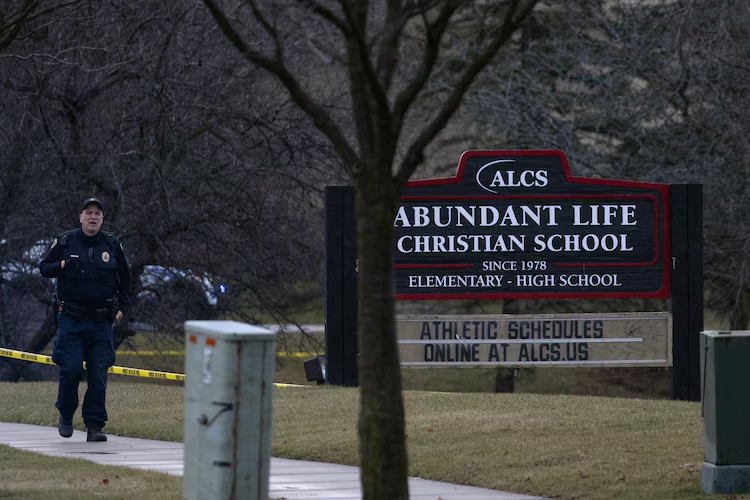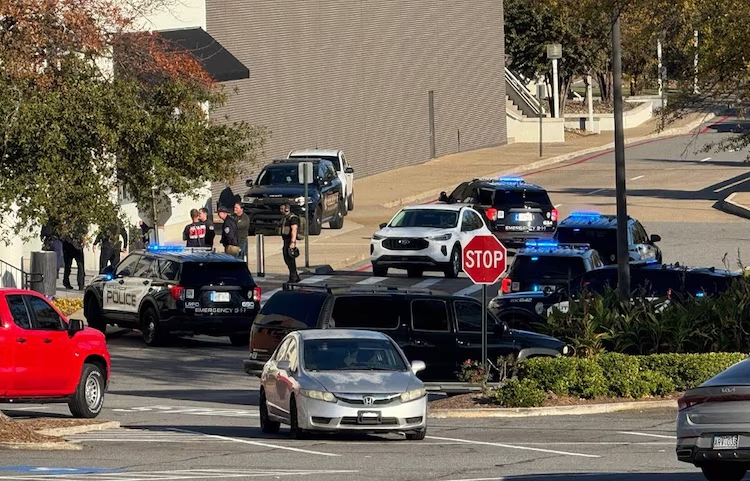Wisconsin school shooter was in contact with California man plotting his own attack, court documents say

Recent court documents have revealed a troubling connection between the Wisconsin school shooter and a California man who was allegedly plotting his attack. The documents provide further insight into the events leading up to the Wisconsin shooting and the interactions between the two individuals. This revelation has raised concerns about the potential for coordinated acts of violence and the disturbing network of individuals who may be planning similar attacks across the country.
The Wisconsin School Shooting Incident
In the early days of the investigation into the Wisconsin school shooting, authorities had only limited information about the shooter’s motives and connections. However, as the investigation progressed, it became clear that the shooter had been in contact with a man in California who was also allegedly planning a violent attack. According to court filings, the two communicated online, and their interactions were reportedly centered around shared interests in violence and mass shootings.
The Wisconsin shooting occurred at a local high school, leaving several students injured and sparking widespread panic among students, parents, and the community. The suspect, a teenager, was arrested shortly after the incident, and law enforcement officials began piecing together the circumstances surrounding the attack. While the teenager initially denied any external influence, evidence soon surfaced that suggested a disturbing connection to the California man.
The California Connection
Court documents reveal that the shooter and the man in California, who is also facing charges related to his planned attack, had been communicating through encrypted online platforms. The two allegedly shared extremist views and discussed their plans for carrying out violent acts. Authorities believe that the California man had been encouraging the Wisconsin shooter, providing him with advice on how to plan the attack and what weapons to use.
The California man, who has been identified in court documents as being in his late 20s, was reportedly planning a similar attack at a school in his state. However, his plans were thwarted by law enforcement before they could be carried out. He was arrested in the days following the Wisconsin shooting, and investigators found disturbing evidence that pointed to his desire to target schools and other public spaces.
It is unclear whether the two individuals ever intended to carry out their attacks together, but the nature of their communication raises serious concerns about potential coordination. The case highlights the dangers of online radicalization and the ease with which individuals can connect with like-minded extremists across the country.
Investigating Online Extremism
The revelation of the connection between the Wisconsin shooter and the California man underscores the growing issue of online extremism and its role in fueling violent acts. In recent years, law enforcement agencies have become increasingly aware of how individuals with extremist views use the internet to connect, share ideas, and even plan violent acts. The Wisconsin case illustrates how easily these connections can turn into real-world violence.
Investigators are now focused on determining the extent of the influence that the California man had on the Wisconsin shooter. Authorities are working to uncover any other potential co-conspirators or individuals who may have been involved in similar plots. Additionally, they are examining the online platforms where the two individuals communicated, hoping to gather more evidence about how extremist ideologies are being spread and amplified.
Experts in online extremism believe that the anonymity of the internet plays a significant role in allowing individuals to form dangerous connections without detection. Social media platforms, messaging apps, and other digital tools provide a space where individuals can share radical views and even make plans for violent attacks. Law enforcement is now grappling with how to monitor and intervene in these online networks before real-world violence occurs.
Legal and Social Implications
The case also raises important questions about how law enforcement and the judicial system should handle individuals who are found to be planning acts of violence. While the Wisconsin shooter and the California man were both arrested before they could carry out their attacks, the fact that they were able to connect and share ideas suggests that more must be done to prevent these types of incidents from happening in the first place.
There are also concerns about the social and psychological factors that contribute to young people’s involvement in violent plots. In the case of the Wisconsin shooter, investigators have uncovered evidence suggesting that the teenager had been exposed to violent ideologies and had been planning the attack for some time. The involvement of the California man in the plot raises further questions about the role that older, more experienced extremists may play in radicalizing younger individuals.
The increasing frequency of school shootings and other acts of mass violence has led to renewed calls for stronger gun control measures, better mental health services, and more proactive efforts to prevent radicalization. Advocates for stronger gun control argue that the ability of young people to access firearms and ammunition contributes to the high number of school shootings in the United States. Mental health professionals, on the other hand, emphasize the need for early intervention programs to identify and treat individuals who may be at risk of committing violent acts.
The Importance of Preventive Measures
This disturbing case highlights the importance of preventive measures to stop mass shootings before they occur. The role of law enforcement in monitoring online activity and identifying potential threats is critical in thwarting planned attacks. Additionally, it underscores the need for a multi-pronged approach that includes not only law enforcement intervention but also educational and community outreach programs aimed at reducing radicalization and promoting nonviolent conflict resolution.
The Wisconsin school shooting, coupled with the involvement of the California man, also sheds light on the need for improved coordination between federal, state, and local law enforcement agencies. While the immediate threat posed by the individuals involved in this case has been neutralized, the broader issue of online extremism and the ease with which individuals can radicalize one another remains a pressing concern.
The connection between the Wisconsin school shooter and the California man plotting his own attack serves as a stark reminder of the dangers posed by online extremism and radicalization. As authorities continue to investigate the case, they are uncovering disturbing evidence of how easily individuals can connect and collaborate through digital platforms to plan violent acts. While the arrests of both individuals prevented further harm, this case raises important questions about how to better identify and prevent these types of incidents in the future.
With the increasing prevalence of online extremism, it is essential that law enforcement, policymakers, and communities work together to address the root causes of radicalization and violence. Through more proactive intervention and increased awareness, it may be possible to prevent future tragedies and protect vulnerable individuals from being influenced by dangerous ideologies.






